Leap Day: 29 National Parks to Visit

1. Olympic National Park | Washington
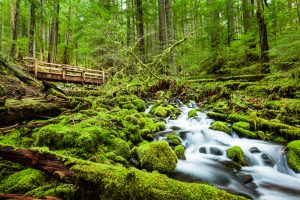
Nearly a million acres of stunning diversity and natural beauty make this sprawling park in northwestern Washington a must-visit for nature lovers.
Olympic National Park contains several distinct ecosystems, including rugged coastline, glacier-capped mountain peaks and lush temperate rainforests.
RV Camping In Olympic National Park:
Mostly first-come, first-served. Most campgrounds have sites for RVs under 21 feet; limited spaces for RVs up to 35 feet.
2. Mount Rainier National Park | Washington
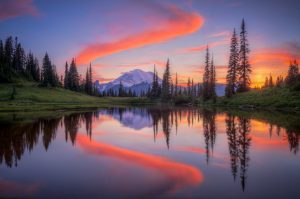
It’s no surprise that Mount Rainier was one of the first national parks created. Reaching over 14,000 feet above sea level, the mountain (which is actually an active volcano) is an iconic part of the landscape.
Glaciated peaks, rivers, wildflower meadows, ancient forests and abundant wildlife await visitors.
RV Camping In Mount Rainier National Park:
Reservations available at some sites during season dates. RV limitations vary by campground, from 27 to 35 feet for motorhomes and 18 to 27 feet for trailers.
3. John Day Fossil Beds National Monument | Oregon
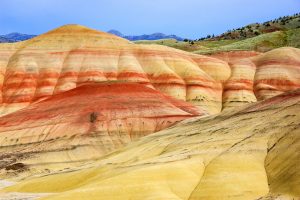
Over 40 million years of plant and animal evolution are preserved in the colorful rock formations of the John Day Fossil Beds.
There are three geographically distinct areas of the monument with rivers, semi-desert shrublands and towering cliffs. But the rainbow-colored Painted Hills are real stars of the show and the main draw for many visitors.
RV Camping In John Day Fossil Beds National Monument:
Camping of any kind is not permitted within the boundaries of the monument. But there are plenty of nearby campgrounds, some with accommodations for RVs up to 72 feet!
4. Crater Lake National Park | Oregon
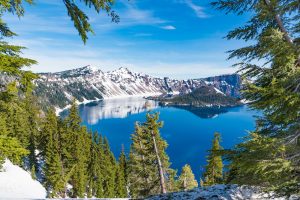
Crater Lake is simply awe-inspiring. Situated in the caldera of a destroyed volcano, it’s the deepest lake in the United States and is remarkably pristine.
The deep blue water is beautiful all year round, but is especially dramatic against the snow.
RV Camping In Crater Lake National Park:
There is an RV-friendly campground within the park that takes reservations (except in June) for RVs up to 50 feet. Dispersed camping (aka boondocking) is permitted with certain restrictions.
5. Yosemite National Park | California
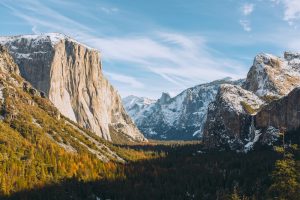
Sequoias, waterfalls and towering granite cliffs — Yosemite is home to some of America’s most iconic and recognizable landscapes.
Located in the Sierra Nevada of California, Yosemite is just over three hours from San Francisco, making it ideal for weekend warriors looking for a dose of fresh air and inspiring wilderness.
RV Camping In Yosemite National Park:
There are 10 campgrounds in the park that offer RV camping for vehicles and trailers of varying size (up to 40 feet for motorhomes and 35 feet for trailers, though these spaces are limited). Reservations are recommended.
6. Sequoia & Kings Canyon National Parks | California
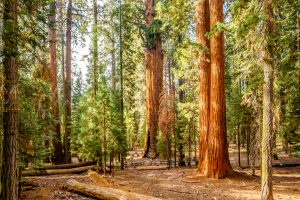
These two adjacent parks have been managed jointly since the 1940s and together are home to mountains, caves deep canyons, diverse wildlife and some of the world’s tallest trees. In fact, the largest tree in the world — named General Sherman — resides within Sequoia National Park and is estimated to be over 2,000 years old.
RV Camping In Sequoia & Kings Canyon National Parks:
There are 14 campgrounds within the parks, offering a mix of reservation-based and first-come, first-served accommodations. There are no RV hook-ups in the parks and due to road conditions, vehicles over 22 feet are not allowed on certain routes.
National Parks In The Rockies
7. Glacier National Park | Montana
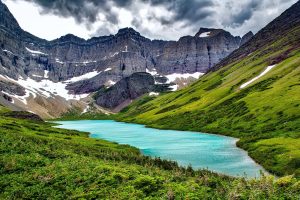
Glacier National Park lies along the Canadian border and is home to a remarkably well-preserved ecosystem that includes grizzlies, moose, mountain goats and wolverines.
Glacier is the headwater for waters that flow through vast parts of the United States, earning it the title of “Crown of the Continent Ecosystem.”
RV Camping In Glacier National Park:
Camping is only permitted in designated campsites, most of which are first-come, first-served. Note that hook-ups are not available and spaces for RVs over 21 feet are extremely limited.
8. Timucuan Ecological & Historical Preserve | Florida
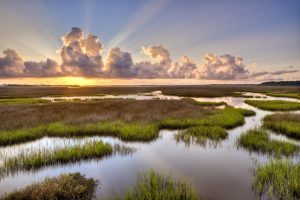
Photo credit: Will Dickey
The Florida national park that you never knew existed, Timucuan is a historically and ecologically rich 42,000-acre preserve that protects thousands of years of human history, plus one of the last unspoiled coastal wetlands on the East Coast.
In addition to its natural beauty, Timucuan includes the remains of a short-lived sixteenth-century French colony, a nineteenth-century plantation and a formerly segregated beach for African Americans — all fascinating and sobering reminders of a complicated national history.
RV Camping In Timucuan Ecological & Historical Preserve:
There are no NPS-operated campgrounds in the park. However, there are two state and local campgrounds located within the boundaries of the preserve with varying accommodations for RVs.
9. Great Smoky Mountains National Park | Tennessee-North Carolina
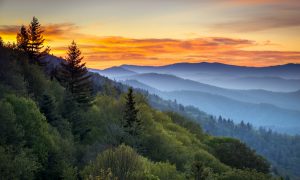
Did you know that Great Smoky Mountains is America’s most-visited national park?
Straddling the border between North Carolina and Tennessee, this 816-square-mile park has some of the most iconic mountain views in the country — not to mention abundant wildlife, spectacular hiking trails and a rich history.
RV Camping In Great Smoky Mountains National Park:
There are nine RV-friendly NPS campgrounds within the park. Maximum length limits vary from under 12 feet to no limit at all. Some campgrounds require reservations, while others are first-come, first served.
10. Assateague Island National Seashore | Maryland-Virginia
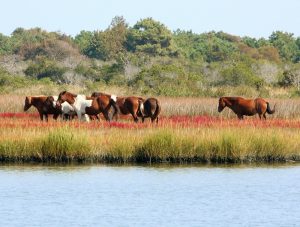
A rugged, windswept wilderness where horses roam freely and an ocean storm can reshape the land in a matter of minutes, Assateague Island is one of the East Coast’s best-preserved coastal habitats.
The land here is constantly changing as the barrier island is buffeted by Atlantic wind and waves. Only three to five hours from some of the East Coast’s largest cities, this pristine 37-mile island feels like a world away.
RV Camping Along Assateague Island National Seashore:
There are two drive-in campgrounds within the park that offer RV camping. Sites have a picnic table and fire ring, but no hookups. Reservations are required.
11. Delaware Water Gap National Recreation Area | New Jersey & Pennsylvania
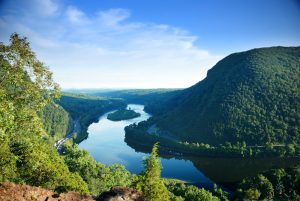
No, this park isn’t in Delaware. It’s located along the Delaware River on the New Jersey/Pennsylvania border, just a short drive from New York City.
Just about every outdoor activity you could want is possible in this recreation area — including fishing, canoeing, cross-country skiing and horseback riding.
More than 100 miles of hiking trails, — including 27 miles of the Appalachian Trail — and 100 miles of scenic roadways wind through the park, making it a great choice for every fitness level.
12. Acadia National Park | Maine
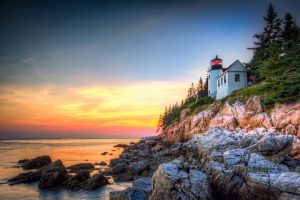
Acadia is the oldest national park east of the Mississippi and was visited by over 3.5 million people in 2017 alone.
Visitors flock to experience Acadia’s rocky headlands, woodlands and famous shoreline, which includes several small Atlantic islands.
The park is rich in natural diversity — wildlife includes moose, bobcats, black bears and many marine species — and is popular with hikers, boaters and beachcombers alike.
RV Camping In Acadia National Park:
There are a number of campgrounds, both NPS and private, that offer RV accommodations with varying restrictions. Campsites fill up quickly, so recommendations are highly recommended.
RV Camping In Delaware Water Gap National Recreation Area:
There are two developed campgrounds in the park with RV sites. These campgrounds are state-run or privately owned in compliance with NPS regulations. Policies and accommodations vary.
13. Denali National Park & Preserve | Alaska
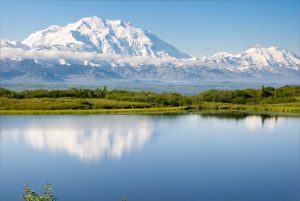
A single, partially paved road stretches 91 miles through six million acres of this Alaskan wilderness.
Home to tundra, glaciers, boreal forests and the tallest mountain peak in North America, Denali is an unspoiled arctic wilderness that beckons mountaineers, wildlife watchers and all manner of outdoor adventurers.
RV Camping In Denali National Park:
RV camping is only permitted in designated campgrounds. There are three campgrounds that accept RVs under 40 feet (no hook-ups), two of which are only open in summer months.
14. Glacier Bay National Park & Preserve | Alaska
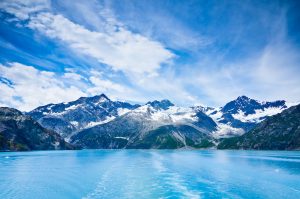
No roads run through Glacier Bay, but that didn’t stop over 500,000 people from making the boat or plane journey to this vast icy wilderness last year.
Located west of Juneau in southeastern Alaska, Glacier Bay is known for its glaciers, snow-capped mountains and enigmatic wildlife — like wolves, bears, caribou and humpback whales, among others.
RV Camping In Glacier Bay National Park:
The park is inaccessible to RVs, but there is a free walk-in campground for tent camping.
15. Hawai’i Volcanoes National Park | Hawaii
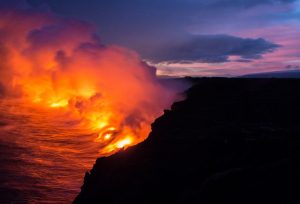
Fire and water meet in Hawai’i Volcanoes. This unique national park includes two active volcanoes — Kilauea, one of the world’s most active, and Mauna Loa, the largest volcano on Earth.
The park encompasses a range of habitats, including lush tropical rainforests and barren desert. Popular activities include hiking, biking, driving tours and, of course, lava viewing.
RV Camping In Hawai’i Volcanoes National Park:
There are two drive-in campgrounds operated by the park that can accommodate small RVs and campervans. No hook-ups are available.
16. Yellowstone National Park | Idaho, Montana & Wyoming
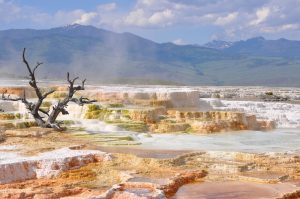
The first national park in the United States (and by most accounts, the world) is a nature lover’s paradise.
The park welcomes millions of visitors each year who come to experience the park’s famous geysers, forests, waterfalls and wildlife.
RV Camping In Yellowstone National Park:
There are over 2,000 campsites in the park, spread across 12 campgrounds. Most campgrounds offer RV accommodations, with size restrictions varying from 25 to 50 feet.
17. Rocky Mountain National Park | Colorado
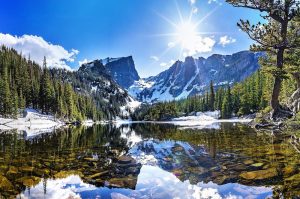
Less than two hours from Denver, Rocky Mountain is home to 415 square miles of beautiful alpine wilderness.
Activities range from snowshoeing and sledding in the winter, to hiking and wildlife spotting in the summer.
RV Camping In Rocky Mountain National Park:
There are four campgrounds that accept RVs (no hook-ups) with length limits from 30 to 40 feet.
18. Mesa Verde National Park | Colorado
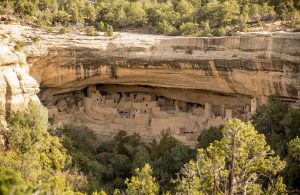
Mesa Verde, which means “green table” in Spanish, preserves nearly 5,000 archeological sites, making it the largest archeological preserve in the United States.
The lands that now lie within the park were inhabited for thousands of years before the arrival of European settlers; the layers of history that are preserved within the park’s boundaries are sure to fascinate history buffs and children alike.
RV Camping In Mesa Verde National Park:
There is only one campground within the park — but with 267 sites, it rarely fills up. Both dry camping and full hook-up sites are available, though the latter are limited and require reservations. RVs must be under 46 feet long.
19. Arches National Park | Utah
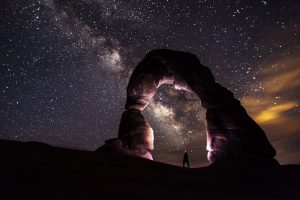
Located just north of Moab, Arches is home to an otherworldly landscape of over 2,000 sandstone arches, as well as fascinating geological features like naturally eroded hoodoos, gargoyles and balanced rocks.
RV Camping In Arches National Park:
Camping is permitted only in designated sites. Spaces fill up quickly during the busy season (March through October) and are usually booked months ahead of time. There are no hook-ups in the park and all RVs must be under 40 feet.
20. Bryce Canyon National Park | Utah
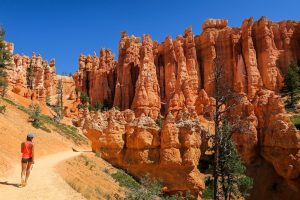
Bryce Canyon is a truly unique and awe-inspiring place that has to be seen to be believed.
Whether you go for a hike among the hoodoos, snowshoe along the rim in winter or simply take in the views with a scenic drive through the park, you’re sure to be wowwed by the landscape.
RV Camping In Bryce Canyon National Park:
There are two campgrounds in the park. During the busy season (April to October), RV parking is restricted to certain areas and vehicles are limited to under 25 feet.
21. Zion National Park | Utah
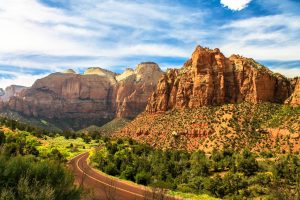
Steep red cliffs, forest trails, waterfalls, riverside hikes, hanging gardens — Zion is filled with inspiring landscapes and natural diversity.
Follow in the footsteps of ancient peoples and pioneers as you explore places like Weeping Rock, the Temple of Sinawava, Emerald Pools and Angels Landing.
RV Camping In Zion National Park:
There are three campgrounds within the park. There are both first-come, first-served and reservable sites available. Many sites have height restrictions of 12’5″.
22. Grand Canyon National Park | Arizona
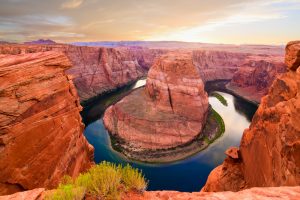
The Grand Canyon is famous for a reason. Up to 18 miles wide, 277 river miles long and up to a mile deep, it’s overwhelming in its scale and beauty.
Go rafting through the rapids of the Colorado River, walk 4,000 feet above the canyon floor on the glass Skywalk or go hiking along the rim for unparalleled views. However you experience the Grand Canyon, it’s sure to awe and inspire.
RV Camping In Grand Canyon National Park:
Two of the three NPS campgrounds accept reservations. None of these three campgrounds have hook-ups, but there is a privately operated RV park within Grand Canyon Village that does and can accommodate vehicles up to 50 feet long.
23. White Sands National Monument | New Mexico
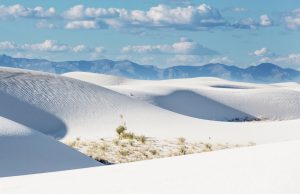
White Sands is a true natural wonder. Located in the northern Chihuahuan Desert, it is home to the world’s largest gypsum sand dunes.
Popular activities include horseback riding, picnicking and sand sledding!
RV Camping In White Sands National Monument:
There is no RV camping within the monument, but there are many public and private campgrounds within an hour’s drive.
24. Big Bend National Park | Texas
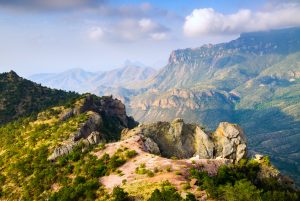
Everything’s bigger in Texas! Big Bend boasts towering limestone cliffs, enormous night skies and, of course, the Rio Grande (“Big River” in Spanish). It’s one of the largest — and least visited! — national parks in the lower 48 states.
The park contains the largest protected area of the Chihuahuan Desert in the country. Despite the harsh climate, Big Bend is home to a diverse array of plant and animal life — almost 2,000 species (plus about 3,600 species of insects). It’s night skies are internationally recognized for their darkness — on many nights you can even see the Milky Way.
RV Camping In Big Bend National Park:
Big Bend is quite RV-friendly. There are plenty of sites with full hook-ups and campgrounds offer a mix of reservation-based and first-come, first-served sites. Some campsites are not recommended for RVs over 24 feet due to road conditions.
25. Scotts Bluff National Monument | Nebraska
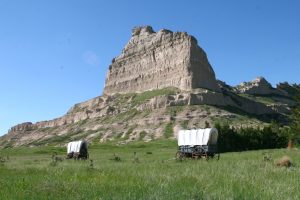
Scotts Bluff towers 800 feet above the plains, and is most famous as a landmark for the emigrants who traveled west along the Oregon and Mormon Trails.
Long before it helped European travelers navigate across the plains, the rock formation was known as Me-a-pa-te by local Native Americans — meaning “the hill that is hard to go around.”
RV Camping In Scotts Bluff National Monument:
There is no camping within the monument boundaries. However, there are several RV campgrounds nearby; Robidoux RV Park offers 42 RV pads with hook-ups and views of the monument.
26. Theodore Roosevelt National Park | North Dakota
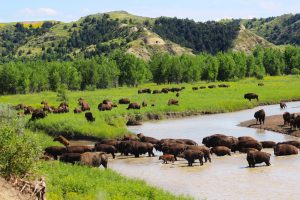
It may seem contradictory, but U.S. President Theodore Roosevelt was an avid hunter of the very bison that his eponymous park now protects. The rugged landscapes and abundant wildlife of North Dakota’s badlands inspired Roosevelt as a young man. When he became president, he made lasting contributions to the conservation of America’s natural beauty and resources.
Visitors to the park can learn all about the Roosevelt connection, or simply enjoy the park’s sprawling badlands and rich wildlife — including feral horses, bobcats, coyote and bison.
RV Camping In Theodore Roosevelt National Park:
There are three campgrounds within the park that can accommodate RVs of various sizes (no hook-ups). Reservations required for some sites, others first-come, first-served.
27. Everglades National Park | Florida
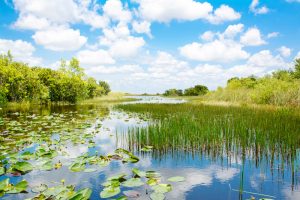
The Everglades isn’t just the largest wilderness east of the Mississippi — it’s also a World Heritage Site, International Biosphere Reserve and Wetland of International Importance.
So what makes it so special? As the largest tropical wilderness in the country, it preserves a huge network of wetlands and forests that form the basis of a rich but fragile ecosystem. There are nine distinct ecosystems within the park and dozens of endangered species call the Everglades home.
Popular activities include canoeing, hiking, boating, biking and bird-watching.
RV Camping In Everglades National Park:
There are two drive-in campgrounds in the park that can accommodate a limited number of RVs (no hook-ups). During the busy winter months, reservations are highly recommended.
28. Jean Lafitte National Historical Park And Preserve | Louisiana
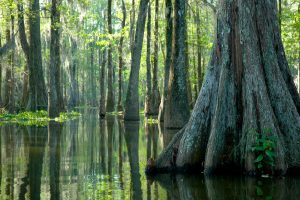
Did you know there was a national park just outside New Orleans? Jean Lafitte, named after the famous French pirate who helped defend New Orleans against the British in 1815, is comprised of six sites that preserve the region’s unique natural and cultural landscape.
Its proximity to major cities makes it a great day trip, whether you’re looking to canoe through Louisiana’s famous bayous and swamplands, learn about Cajun culture or visit the site of the Battle of New Orleans.
RV Camping In Jean Lafitte National Historical Park:
There is no RV camping within the park’s boundaries, but you can find camping at nearby state parks as well as private campgrounds.
29. Buffalo National River | Arkansas
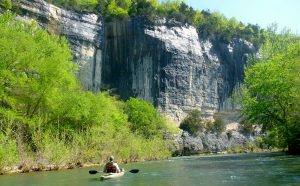
The Buffalo River flows uninterrupted through this national park for 135 miles; it’s one of the last remaining undammed rivers in the contiguous United States.
In addition to river-based activities like canoeing, visitors will find hiking and horseback riding trails, historic homesteads and starry skies.
RV Camping Along Buffalo National River:
There are a number of campgrounds throughout the park offering the full range of amenities from primitive to full hook-up. Camping is permitted in designated spots only.
Enjoy this extra day by visiting an awe inspiring national park. There is so much beauty within our country and we should all take the time to check it out.







